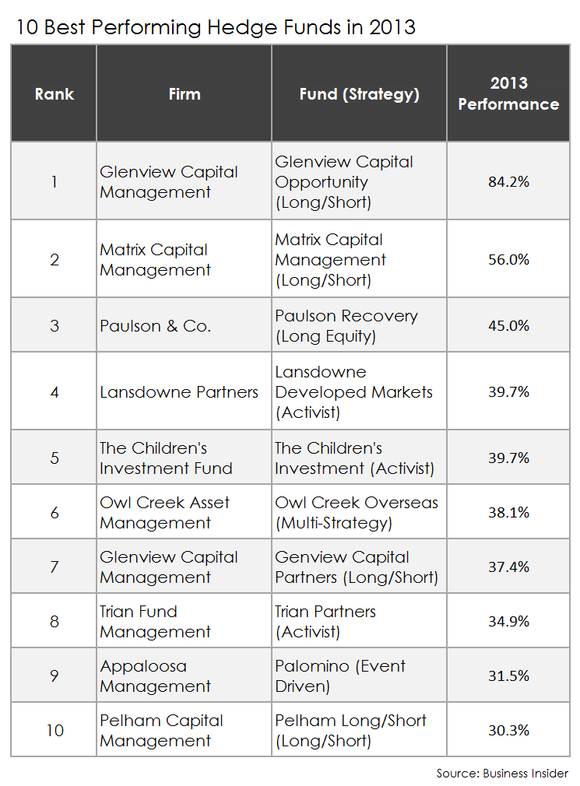The History of Hedge Funds
Post on: 3 Апрель, 2015 No Comment

The History of Hedge Funds — The Millionaire’s Club
By Mario J. Gabelli
October 25, 2000
The Hedge Fund
There are many ways for an individual investor to earn a return on his or her capital.
First, you would look at whether you want to earn an absolute or a relative return. That is, if you start with $1 million, would you like to have $1.1 million at the end of 12 months (absolute return), or do you want to earn a relative return by benchmarking your capital to an index, such as the Standard & Poor’s 500, or more recently, NASDAQ, and earn a return that matches that index.
Once your goal is set, you can invest in equities or fixed income. Equities can be either global or U.S.; they can be growth or value; large cap or small cap. Your assets could be actively managed by a professional or by yourself, or they could be in an index fund.
In past articles we talked about investing in growth stocks, value stocks, and gold. In this particular issue, we will focus on what some would view as a black art — hedge funds.
Hedge funds have been making headlines in the past twelve months. In 1998, the near collapse of Long Term Capital Management spawned a global liquidity crisis and calls for regulatory scrutiny in the financial services industry’s last largely unregulated domain. More recently, the much publicized performance problems of George Soros’ Quantum Fund and the dissolution of another legendary hedge fund, Julian Robertson’s Tiger Fund, cast another shadow on the hedge fund business. Today, if asked to define a hedge fund, I suspect most folks would characterize it as a highly speculative vehicle for unwitting fat cats and careless financial institutions to lose their shirts. Nothing could be farther from the truth.
With the significant help of Tremont Partners, Inc. a publicly traded company on NASDAQ, and its research arm TASS Investment Research Ltd. the world’s leading experts on the hedge fund industry, I present the following history of hedge funds and give a few reasons I believe hedge funds offer an attractive alternative for sophisticated investors. (In the spirit of full disclosure I point out that we are large shareholders of Tremont)
Mr. Jones
In 1949, Alfred Winslow Jones formed the first hedge fund. A truly remarkable individual, after graduating from Harvard in 1923, Jones toured the world working as a purser on tramp steamers, served as a U.S. diplomat in Germany during the rise of Nazism in the 1930’s and as a journalist covering the Spanish Civil War. In 1941, he received his Doctorate in Sociology from Columbia University and became a reporter for Fortune Magazine. In researching and writing a 1948 Fortune article on the current fashions in investing and market forecasting, Jones came to the conclusion that he had a better system for managing money. In 1949, he raised $100,000 ($40,000 of which was his own money) and began putting his theories to practice in a general investment partnership.
The foundation of Jones’ novel investment approach was hedging his long stock positions by selling short other stocks to protect against market risk. Thus, the term hedge fund was born. He also used leverage (borrowed money) to enhance the potential return on the partnership’s assets. Jones called short selling and leverage speculative tools used for conservative purposes. In 1952, he transformed his general partnership into a limited partnership and introduced another wrinkle, a 20% of the profits incentive fee for himself as managing partner. His entire liquid net worth remained in the partnership. This one fellow was responsible for combining short selling, leverage, incentive fees, and shared risk-the four most common characteristics of the classic hedge fund-into one investment package.
And quite a package it turned out to be. Operating in almost absolute obscurity for seventeen years, Jones’ success was finally brought to the public eye in a 1966 Fortune Magazine article titled The Jones’ That Nobody Can Keep Up With. In addition to detailing Jones’ unique investment strategy, the article revealed that his partnership had outperformed the best performing mutual fund that year by 44% and the best five-year performing mutual fund at the time by 85%, net of all fees. This article attracted the attention of both wealthy individuals seeking better investment returns and talented professional investors willing to sacrifice big salaries for profit participation in the portfolios they managed. By 1968, there were approximately 200 hedge funds including those formed by investment industry legends George Soros, Michael Steinhardt, and Warren Buffett.
The Dark Ages
Unfortunately, many of the new hedge fund managers weren’t really hedging at all. Shorting even a small percentage of a portfolio restrained performance in the go-go markets of the mid-late 1960’s. So most hedge fund managers simply stopped doing it. They were leveraged long-particularly risky business in less accommodating markets. This produced some big hedge fund losses in 1969-70 and major bloodletting in the savage 1973-74 bear market. The more prudent hedge fund operators survived, but many more closed the doors. In 1984, when Sandra Manske formed Tremont Partners and began researching the hedge fund industry, she was only able to identify 68 funds.
The Renaissance

The hedge fund industry limped along until the early 1990’s, when the financial press once again began trumpeting the returns achieved by hedge fund superstars George Soros (Quantum Fund) and Julian Robertson (Tiger Fund and its offshore sister Jaguar Fund). Many hedge funds no longer resembled the classic long/short equities model developed by Jones. For example, Soros made his big killing in the currency markets and Robertson employed modern financial derivatives such as futures and options, which didn’t exist when Jones started his fund. With lots of new hedging tools and a tide of favorable publicity, the hedge fund universe exploded. At the end of 1999, Tremont Partners estimated as many as 4,000 hedge funds of all shapes, sizes and investment disciplines existed, 2,600 of which were tracked in its data base.
Funds of Funds
A new hedge fund concept-the fund of funds-also evolved. As the name implies, limited investment partnerships are limited to a maximum number of partners. Hedge funds are also limited by the type of partners they can accept-very high net worth individuals and large institutional investors (pension plans and endowment funds). Consequently, hedge funds remained very exclusive clubs.
Then, innovative financial service companies such as Tremont Partners began opening doors by introducing funds of funds-limited partnerships pooling assets to secure partnership slots with one or more top performing hedge funds. This pooling of capital opened the hedge fund doors to people with more limited investment resources. Fund of funds minimums are still generally in excess of $ 1 million but you no longer need to be on the Forbes 400 list to hire the impressive investment talent that has gravitated to the hedge fund industry. Also, funds of funds allow investors to diversify among several hedge funds.
Hedge Funds’ Inherent Edge
At this juncture, I hope some of you are at least intrigued by the hedge fund concept and wondering whether you should seriously consider a fund of funds investment. You will have to look beyond the recent headlines that have given hedge funds a bad name and realize that hedge funds are as good or bad as the folks that are operating them. To paraphrase famed investment journalist Gerald Loeb, the only priceless ingredient in a hedge fund is its management. However, Tremont Partners and its research arm Tass Investment Research Ltd. have identified performance patterns that infer there are meaningful advantages to the hedge fund structure.
Tremont’s research reveals that from 1990-99, the top quartile (25%) of hedge funds outperformed the top quartile of more traditional fixed fee based investment managers by a significant margin. Interestingly, this top quartile of hedge funds outperformed in down markets as well as up markets, indicating the use of leverage in rising markets does not fully explain higher returns. Tremont believes two factors, trading advantages and incentive based compensation, give well managed hedge funds an edge.
Trading advantages include superior information, lower transaction costs, better market access, size advantages, and structural inequities in the markets in which investors operate. So, what’s new? These are the very same advantages financial institutions, including mutual fund companies, have always enjoyed. But, remember most hedge funds have greater investment flexibility than regulated investment advisors. They can profit from leverage in up markets and varying forms of short selling in declining markets, whereas most mutual fund companies can’t use leverage and their only defensive option is to raise cash. Also, hedge funds tend to be focused on less efficient market sectors where the first call on new information can translate into an even bigger performance advantage. Size matters as well. The largest mutual fund dwarfs the largest hedge fund. In today’s volatile markets, the small and swift often have a distinct edge over the big and unwieldy. Incentive based compensation is a powerful lure for investment talent. Twenty percent of the profits can be a very good deal even relative to a big Wall Street salary. Gabelli Funds has four core portfolios in the hedge fund style among its product offering.














